This is the 15th post in a series about the Leica Q2 Monochrom. You can see all the other posts in the series by looking in the Category List drop-down menu on the right side of the page.
In the last post, I discovered some truly weird behavior in the highlights of ISO 100 images made with the Leica Q2 Monochrom.
Test procedure. Using the RRS Q2 plate, I put the Q2M on a sturdy set of RRS carbon fiber legs using an Arca Swiss C1 head. I set the camera to ISO 400 and a quarter of a second. I adjusted the aperture to get mild clipping. Using the self-timer, I made an exposure. The I set the ISO to 200, the shutter speed to 1/2 second, and made another exposure. Finally I set the ISO to 100, the shutter to one second, and made still another exposure.
Processing. I extracted the raw images, normalized them to 16383, so that full scale was now one, downsampled them in Matlab, added a gamma 2.2 tone curve, and here’s what they look like for ISO 100 and ISO 200:

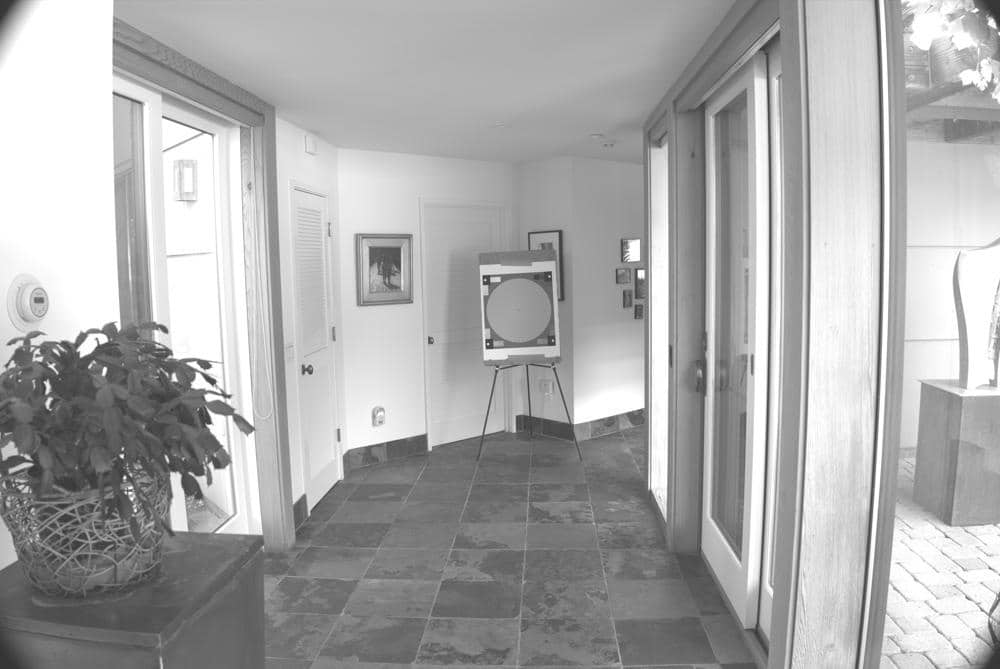
I wrote a interactive cropping method, and looked at the scatter plots various places in the image.
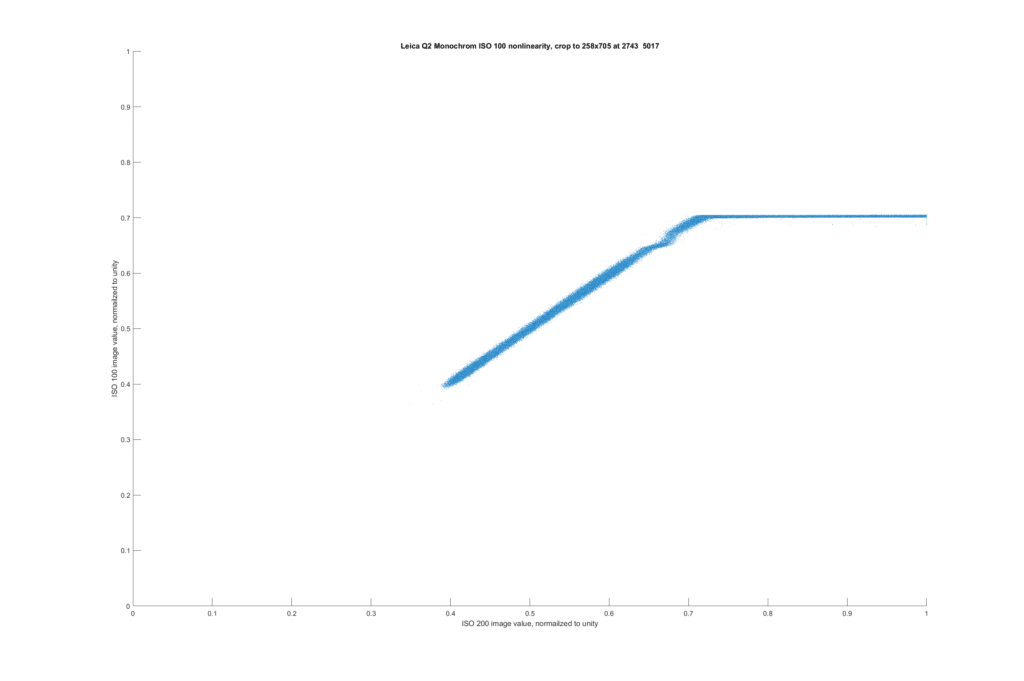
This looks like a smooth gradient. It is clipped at about 72% of full scale. There is a funny glitch just below the clipping point.
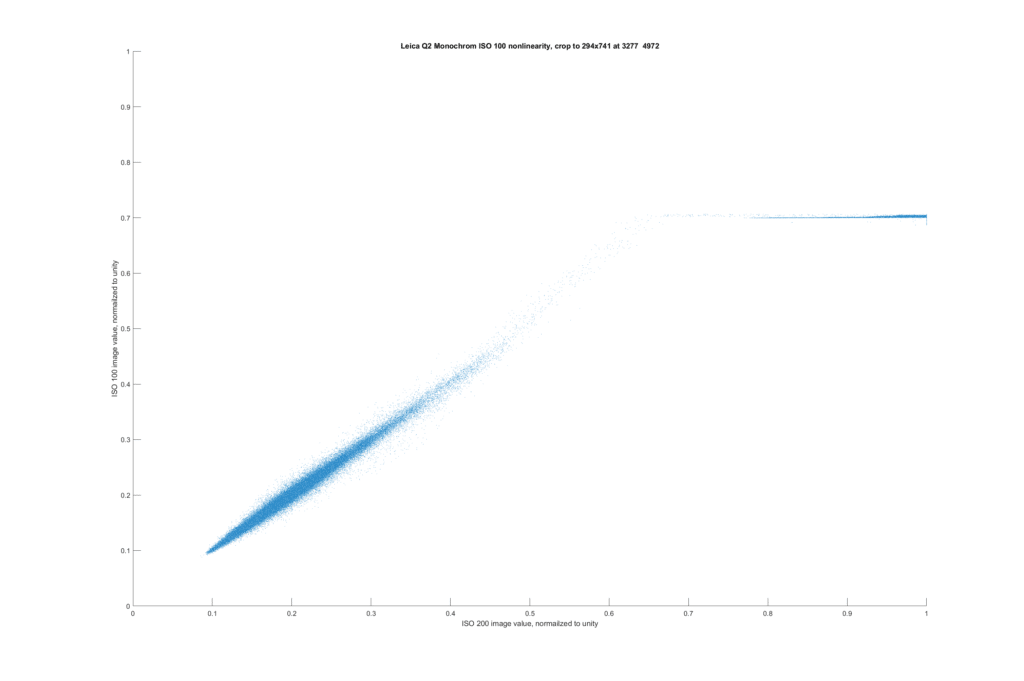
What if there’s a lot of high spatial frequencies?
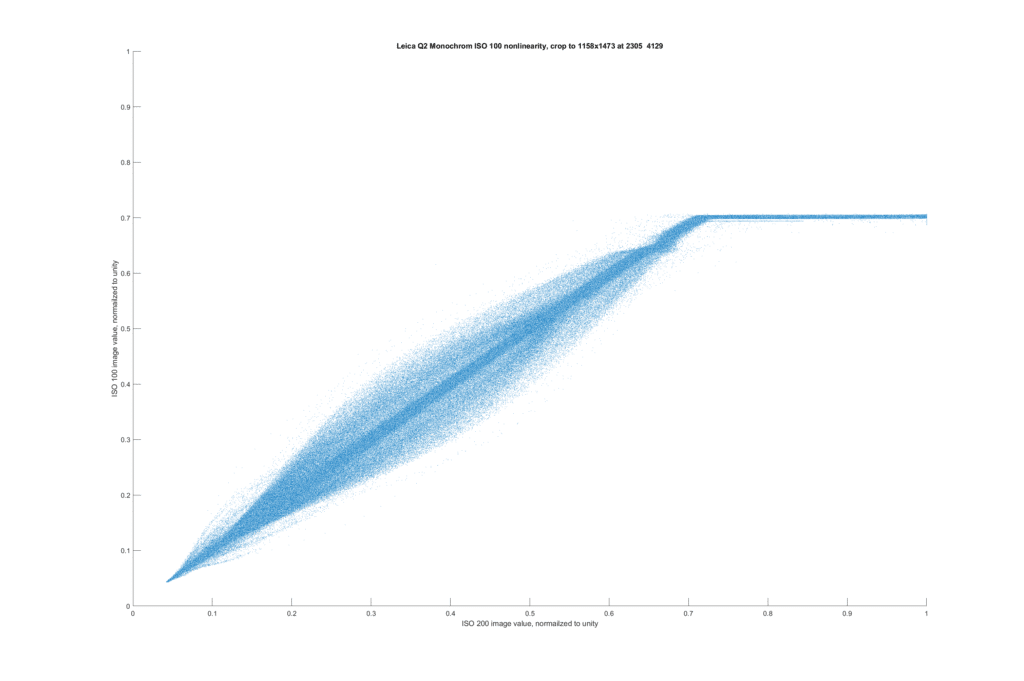
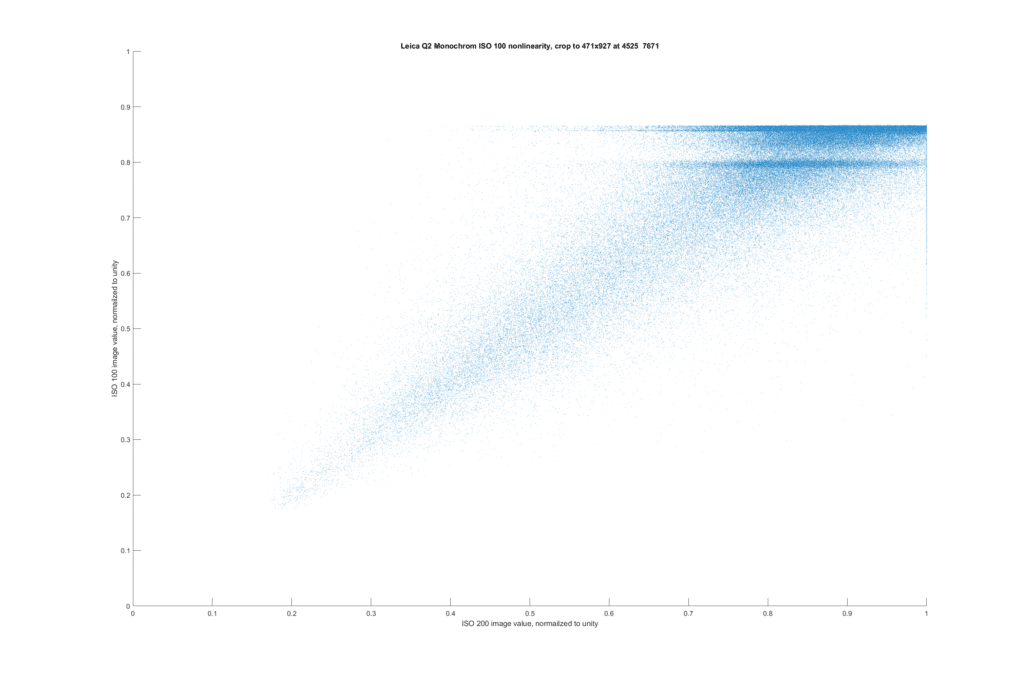
Note the double slipping points. What does that depend on? I’ve no idea.
Now I’ll compare the ISO100 vs the ISO 200 results (in blue) with the ISO 200 vs ISO 400 ones (in orange).
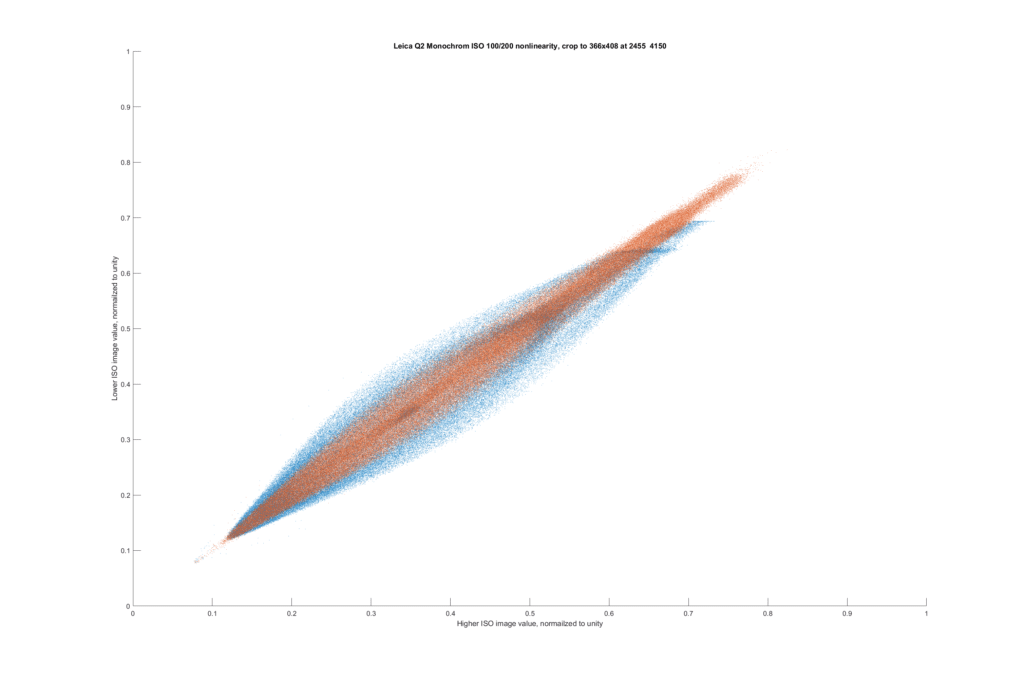
It appears that some widening of the scatter in the high-spatial-frequency parts of the image is due to alignment, since there is some spread — but less spread — in the higher ISO comparison.
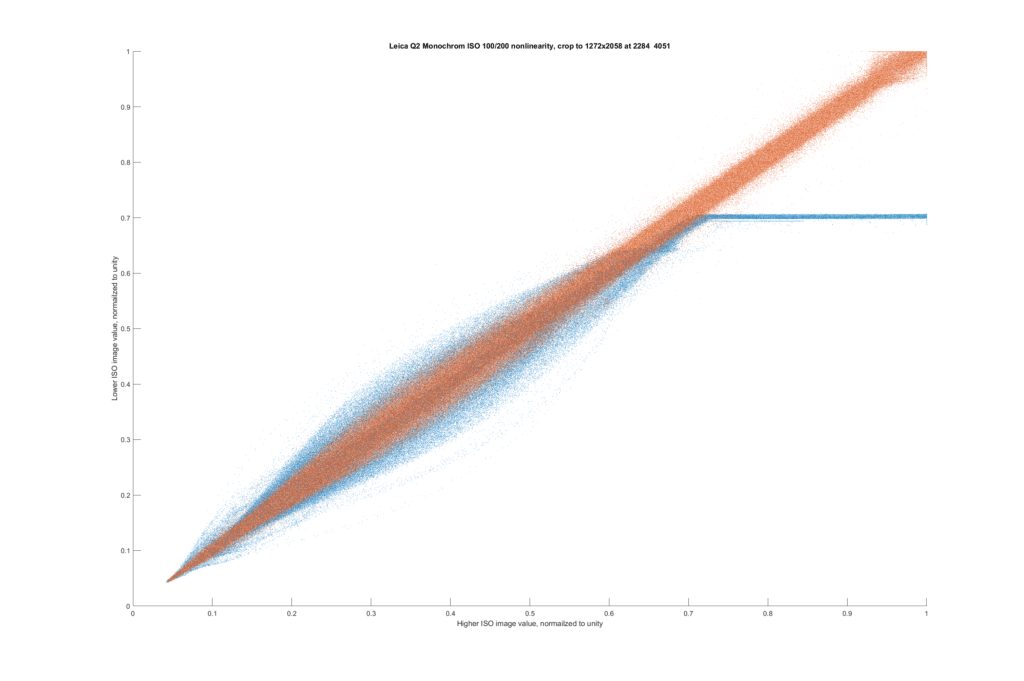
If we zoom out a bit, we can see the saturation better.
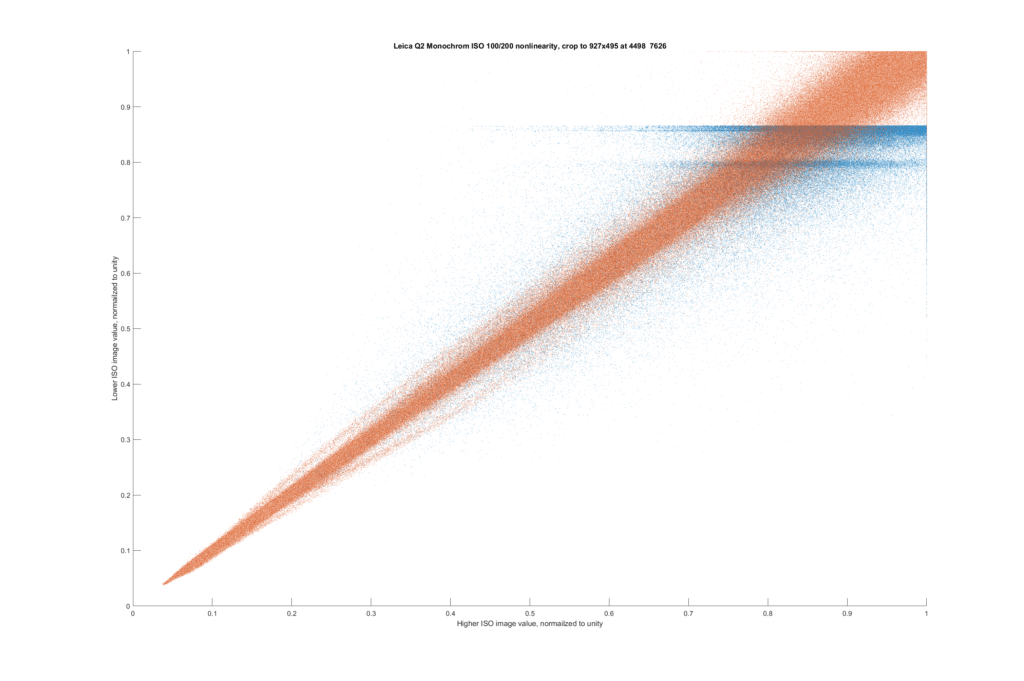
Note the big spread in the lower-ISO image, and the double clipping point.
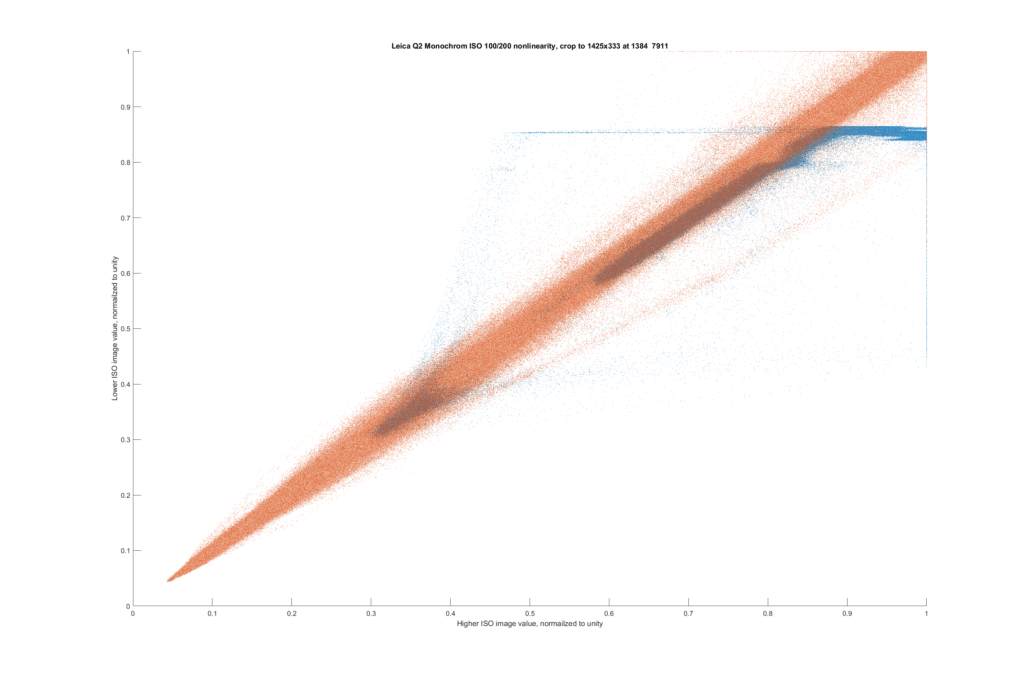
This is a lower-spatial -frequency crop.
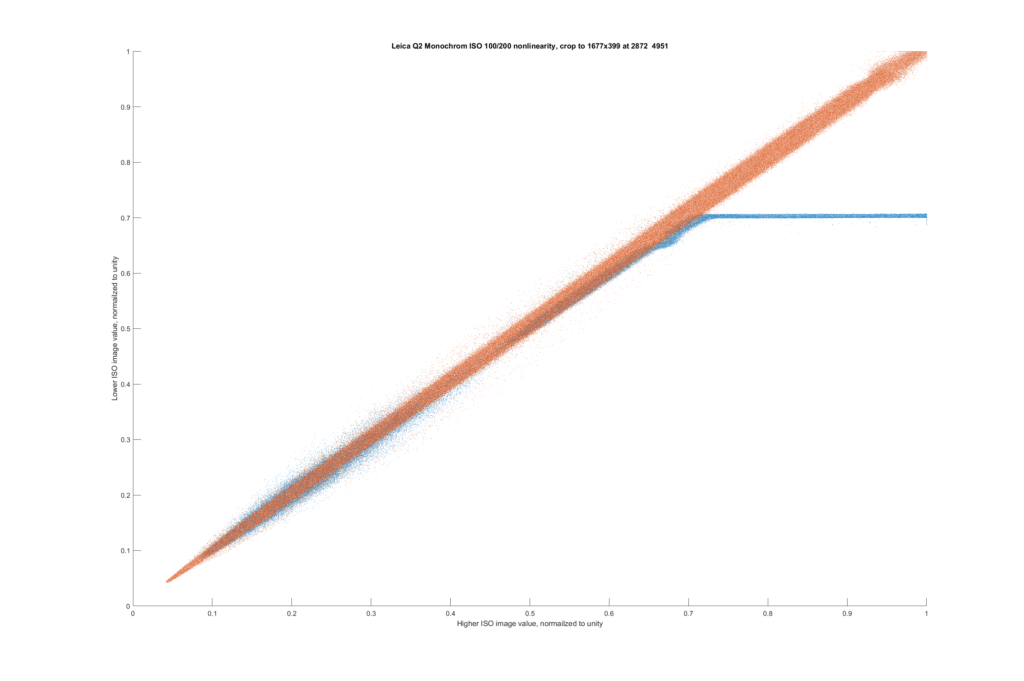
From this test, it’s clear that the camera is doing some kind of processing that depends on he image captured. But just what kind of processing? I haven’t figured that out yet.

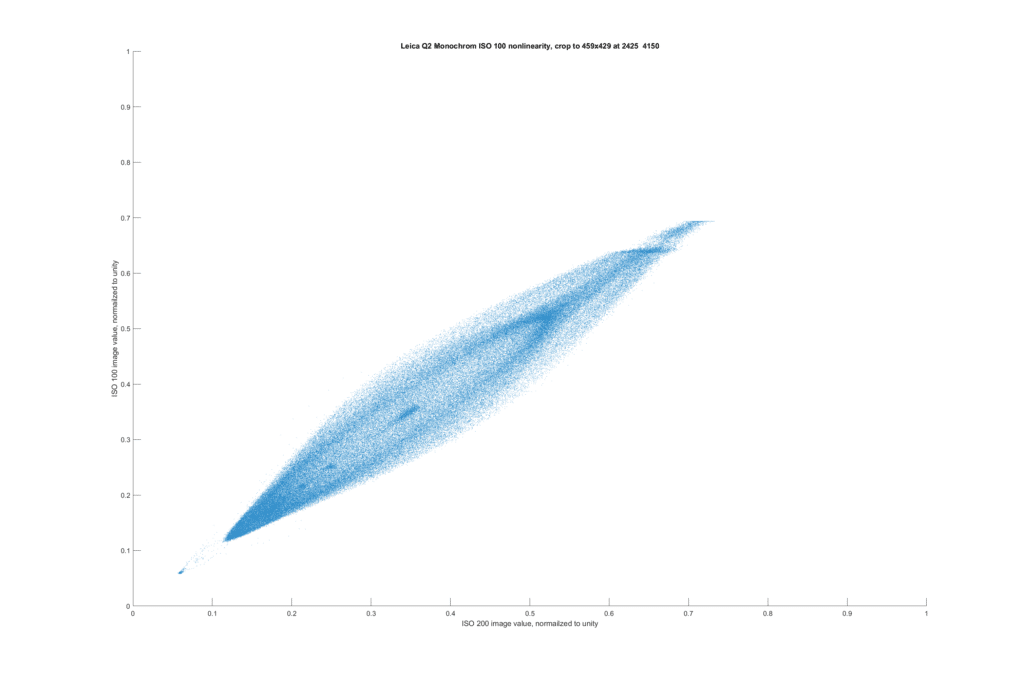
CarVac says
I’ve heard that since FF size sensors must be done in two stitched halves on the photolithography machines, you end up with different raw saturation points on each side.
I’m surprised your double clipping occurs in small subsections of the image like just the pavers.